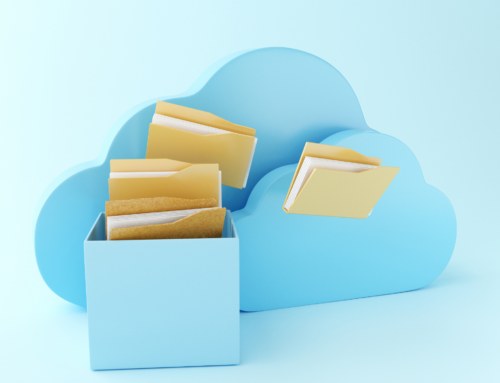While an influx of vendors move to the Cloud, will you stay with older tech tools they are no longer updating? How does your budget or mindset affect how you update systems and processes?
Time spent manually navigating invoices, payments, and payroll can strain any team member. If you are using Excel, migrating to QuickBooks Desktop can get your organization into an accurate accounting system and introduce accounting automation.
Automation can also help your organization capture, store, and communicate critical business information effortlessly. If you already have QuickBooks Desktop to track and send invoices and pay off your vendors, moving to QuickBooks Online will give you the benefits of Intuit’s security without the additional cost of implementing that security yourself.
While QuickBooks Online may be outside your budget plan, it can become an investment that helps you easily manage what you may now do manually.
In other words, aside from easy automation and visibility, QuickBooks Online can offer your organization more security at any time or place.
Cyber threats increase on what seems to be a daily basis. What systems will you have in place? Bad actors improve their infiltration of small and medium-sized businesses mainly because SMBs do not increase and refresh their security. Cyber threats plaguing SMBs are outside your control, but you can decide what defenses to implement.
QuickBooks Online can help your organization optimize accounting and automation. You can easily view QuickBooks Online and all your systems within a single dashboard. As a QuickBooks partner, we can tighten your security and create clear visibility of your various systems to enhance your organization’s productivity.
Accounting: Easy as 1,2,3 and Do-Re-Mi
Stop running off computers from a data center; we can help you transition from QuickBooks Desktop into the Cloud.
If your accounting software is not from an accounting vendor, for example, your organization uses Access or Excel, moving you to QuickBooks Online is still possible.
The initial move to the Cloud requires us to create a standard location for you to handle receivables and payables and get your financial reporting out. Then you can move similar things into the suite, such as taking care of electronic payments.
As you consolidate, things become a bit more helpful. Instead of files, or piles of paper reports, enjoy a quick and easy view of your invoices in one place and a record of when payments are made.
When you move accounting to the Cloud, you can put your tracked receipts into the QuickBooks Online platform, or you may make it part of your overall M365 document management, where you currently keep receipts.
Both have pros and cons, so speak to a TechHouse advisor about the right strategy for where you want to keep your supporting documentation, such as Excel spreadsheets that show the backup for any adjustments made in your accounting software.
You need to keep your documentation somewhere, so how do you structure it, and how do you amplify safety in your Cloud files? Your email and files should be in the Cloud. After this foundation, you can add payroll, handle security payments, automate invoices, and track expenses.
QuickBooks Online offers easy and friction-free tools that will automate sending your sales team a spreadsheet that shows all the sales from the prior week or all the sales from the preceding month. If you have a team member responsible for collections, you can send them an outstanding balance spreadsheet at the end of every day, so they can see what invoices have and have not been paid.
Most banks can be connected to the environment, and you can set up rules. Rules such as a transaction from your utility provider can automatically get booked to your utility account. QuickBooks Online matches it and sends it right through.
Say goodbye to manual recording, automation helps take care of transactions.
Ramp Up Your Security before Cyber Threats Rock You
QuickBooks Online offers security within its platform.
A helpful feature allows your organization to assign custom rules. For example, with multiple people in your accounting software, sales won’t have to deal with vendors and vice versa. You can decide who has access — helping you segment responsibility and visibility to specific roles.
However, it behooves you to implement additional security to mitigate risk over your entire environment. Unfortunately, many SMBs understand the severity of cyber threats but aren’t proactive in what they know. Responding too late has already resulted in 60% of small businesses going out of business after they’ve experienced cyber-attacks.
We help organizations mitigate risk with various solutions, one being Safety Plus. When you move to the Cloud, Safety Plus implements robust security, which allows us to restrict insider risk, reduce OPEX, and substantially minimize traditional hardware failures and downtime. Know that sometimes your computer isn’t moving slowly “just because.”
Safety Plus Cybersecurity includes monitoring, hardening, Cloud alerts, and training. Your team may know about cybersecurity, but our training helps your organization reduce security threats. Our hands-on training programs help your organization maintain a consistent security posture.
Phishing attacks can be clever. Using our Phishing Net software, we send phishing simulations to your team, and they are asked to complete training if they fall for the attack – a real-world scenario without real-world consequences.
Bad actors are like viruses: they adapt to what’s used to decimate them and respond in a new, hopefully undetectable, form.
In other words, implementing security is not enough. You must manage what you secure:
- SafetyPlus™ Hardening gets our tech experts into your system monthly to tighten up your security – closing any cracks bad actors may wiggle through.
- SafetyPlus™ Cybersecurity Awareness sends monthly training to your team, keeping your organization familiar with rising threats.
- SafetyPlus™ Remote Monitoring and Management pays close attention to your system and alerts our team when it detects something unusual, especially invasions you may not see. Our tech experts promptly respond to alerts to ensure your organization hasn’t been breached.
Files sent through email, documents stored in SharePoint or OneDrive, and your QuickBooks environment will have around-the-clock watchdogs. Your environment safely captures data, but how do you understand how the business is going?
Better Visibility and KPI Tracking Using Apps and Analytics
Imagine the possibilities of KPI tracking and decision-making when you don’t have to connect information from scattered systems manually. Now that your critical business information, such as your financials, is in the Cloud, what other opportunities can reveal themselves?
Automating accounting and moving to the Cloud helps various systems communicate. Our Data Toolkit then aggregates data across multiple systems to represent all your systems within a single dashboard for easy understanding.
Invoices that help you understand customer revenue, products sold, expenses to vendors, and payroll can now be accepted and connected to your CRM system, the system you use for operational tracking, products you assemble, or what’s in inventory.
Sales, accounting, and operational data reflect as one view, helping you visualize how your organization is performing.
If you have these other systems, big pictures won’t only help you, but you will have better visibility on how different leavers affect each other. We want to bring in information from all those systems for you.
No one should discourage you from having over 20 operations to run your business – especially when you can capture information from all of them. We create dashboards that confine data from many locations because once an organization reaches about 10 or 20 people, one system typically doesn’t meet all the organization’s needs. We want to make your process of doing things your way easy. Supporting who you are as an organization, how your organization operates, and configuring what your organization needs matters to our team.
Our experts and solutions can handle more than one application.
In addition, by leveraging the dashboard technology, we can have artificial intelligence help you predict or understand anomalies, things that look off, and trends going in the wrong direction – ways to help guide us even more.
Embrace data as your ally. Financials from QuickBooks are excellent, but they won’t give a complete view of your entire organization. Smart reporting helps you understand what’s going on broadly in your organization. We combine all this data from all these sources. And again, you want to make sure your systems are secure.
Not Tech Savvy? We Make It Easy
Your accounting team won’t need to spend countless hours doing the best they can with little hope of making progress. QuickBooks Online, hardening your security and clear visibility, makes accounting less intimidating. As a QuickBooks and Microsoft partner, we are happy to provide all the one-on-one support you and your organization may need.
Would you feel safe saying you’re going to lock your front door even though you never actually lock it? Tightening up your organization’s security and monitoring your environment can reduce how often you may be currently looking over your shoulder.
Jumping from one system to the next may cause you and your team to misstep. A complete view of your organization’s ins and outs will help you see and think clearly about past, current, and next steps.
You don’t have to be tech-savvy to optimize work minutes. We are here to put solutions in place, so your team can put their skills to exceptional use.





